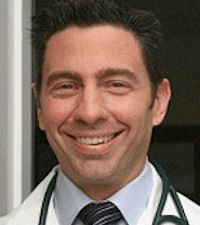Article
Opt-Out Testing for HIV, Hepatitis C Could Improve Diagnoses in the ED
Author(s):
Approximately 30% of annual HIV infections are caused by the subset of individuals unaware of their serostatus, and HCV rates have nearly tripled since 2011.

Christopher Hall, MD
A new study from screening results performed at a pair of Oakland-based hospital systems found that automated, routine testing for HIV and hepatitis C virus (HCV) conducted in integration with standard nursing workflow could increase the prevalence of caught diagnoses for both diseases.
The obvious end-result would be more timely care for patients unlikely to be tested outside of an emergency department (ED) setting—namely, younger patients.
The study, published and presented at the 2018 Annual IDWeek Meeting in San Francisco, CA, this week, was led by Ryan Anson, MS, NP-c, and Christopher Hall, MD, of the East Bay Advanced Care system in Oakland. Along with colleagues from the Sutter Health Alta Bates Summit Medical Center (ABSMC), an outpatient HIV clinic, the team assessed the merits of a Nursing Standardized Procedure (NSP) that would allow registered nurses (RNs) to independently order blood tests for HIV- and HCV-susceptible patients.
The tests used an automated, best practice authority (BPA) screen in the electronic medical record of any patient who met testing age criteria set by the US Centers for Disease Control and Prevention (CDC).
According to the CDC, approximately 11,280 (30.2%) of annual HIV infections are caused by the subset of individuals unaware of their serostatus—which is about one-seventh of the HIV population in the US.
Similarly, rates of HCV have been difficult to control. The CDC also reported that acute infection rates have nearly tripled since 2011, and that many states still report dramatic increases in incidences among younger people outside the birth cohort. The potentially significant role of EDs in catching these populations is emphasized by opportunity.
“Routine opt-out testing in the ED is effective at identifying new cases of acute and established HIV infection as well acute and chronic HCV that could have otherwise been missed by risk-based screening,” investigators wrote.
Using the BPA-based tests, care providers screened 6315 people for HIV between May 2017 and March 2018. Just 43 (0.7%) tested positive. Of the 21 to have a new diagnosis, 12 (57%) also had symptomatic, acute HIV infection (AHI). All dozen patients AHI had initiated anti-retroviral therapy (ART) within 5-96 hours of preliminary positive test results.
In the same time period, 5820 patients were screened for HCV. Care providers identified 424 (7.3%) as being anti-HCV-positive, and 185 (3.2%) as having a chronic infection. Among the latter group, 39% were patients born before 1965—the last year bookending the Baby Boomer generation, a population most commonly targeted for HCV testing.
All patients diagnosed with either HIV or HCV were referred to medical care at EBAC. Investigators concluded the results of the universal opt-out testing program indicated timely screening, diagnosis, and treatment of many unknowing patients with HIV or HCV. The practice also did nothing to adversely affect overall ED operations, patient length of stay, or overall quality of patient care.
Though the investigators noted there being a “unique involvement” of the EBAC clinic into the testing program’s design—as well as its proximity to ABSMC ED—that facilitated expedited treatment results, the overall intent of the program could be a repeatable model for similar hospital settings.
“Evidence demonstrates that immediate treatment can reduce the likelihood of transmission, decrease serious health complications, and promote better long-term retention in care,” they wrote.
Additionally, the study showed the need for greater HIV and HCV surveillance and testing.
“While only 25 to 30% of eligible patients were screened each month for HIV and HCV, ABSMC’s testing program provided an important public health service which promoted greater serostatus awareness,” investigators wrote. “This RN-led initiative also helped reduce the potential for serious mortality and morbidity from undiagnosed disease.”
The study, "A Routine HIV and HCV Testing and Treatment Program in a Large, Multi-Campus Emergency Department Finds High Prevalence of Acute HIV and Chronic Hepatitis C," was presented at IDWeek 2018.
Click here to sign up for more MD Magazine content and updates.
Related Coverage >>>
Intervention Boosted Engagement In Patients with HIV At Risk for Becoming Un-retained
Opioids Prescribed Twice as Often for Women with HIV Than Men




